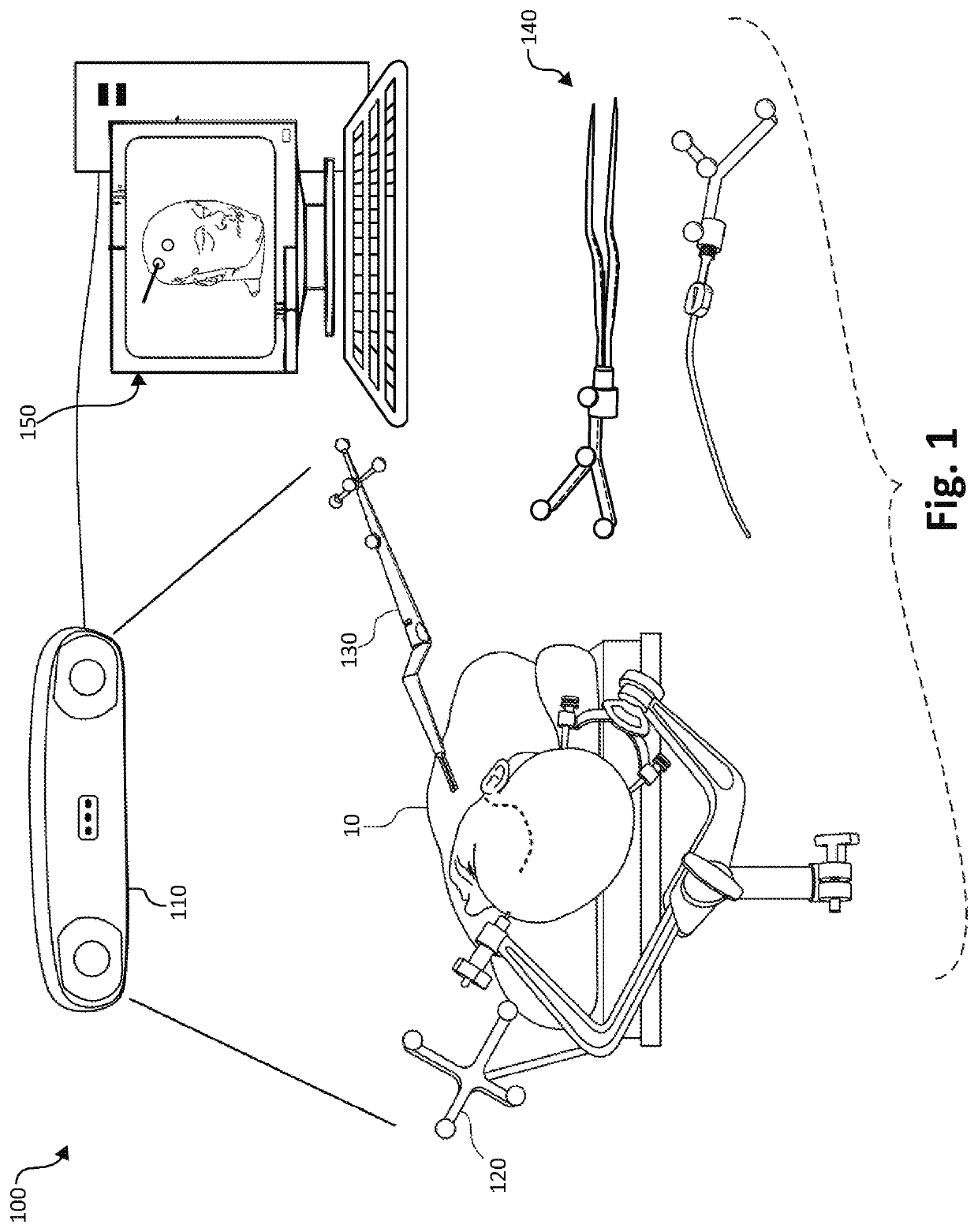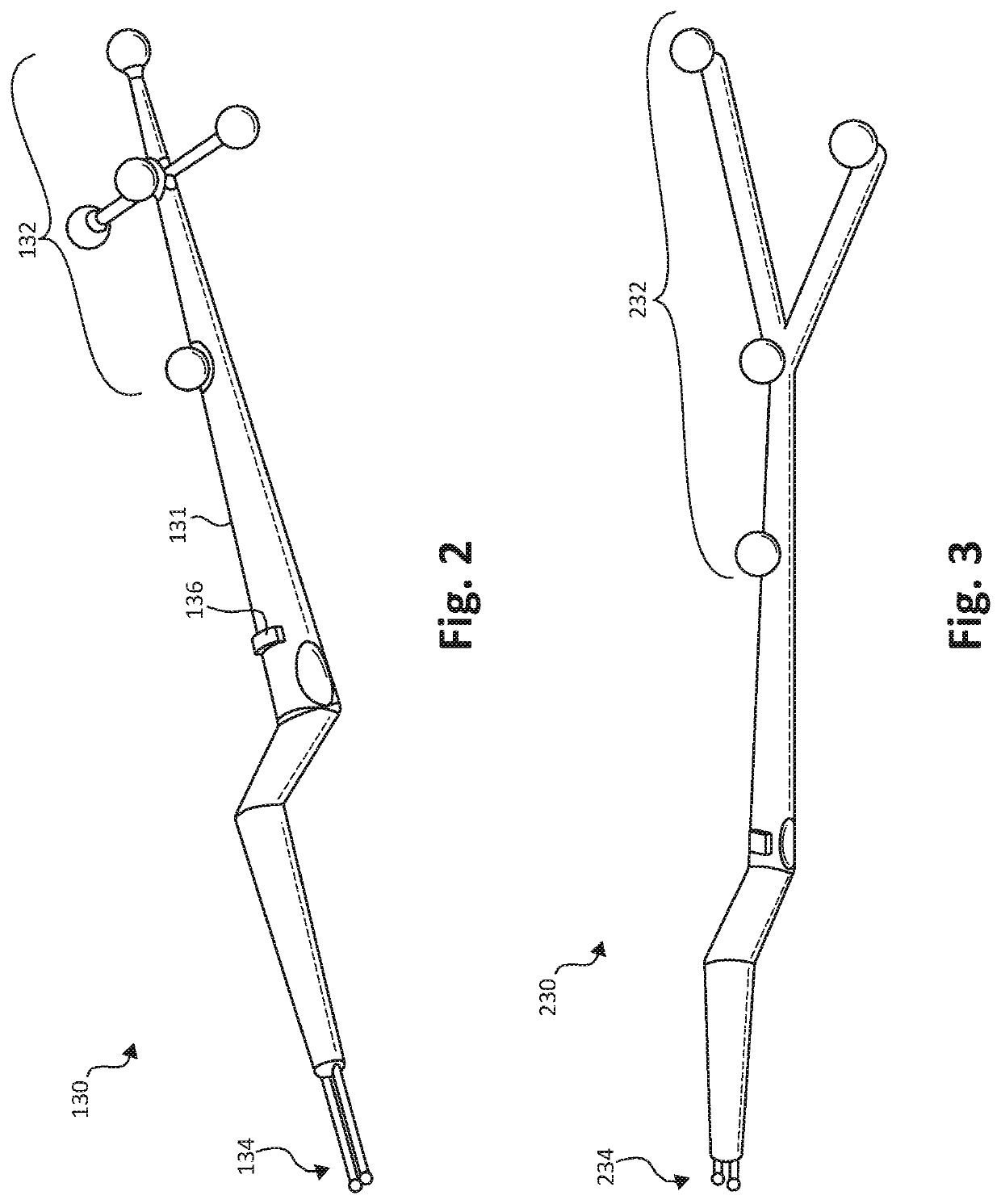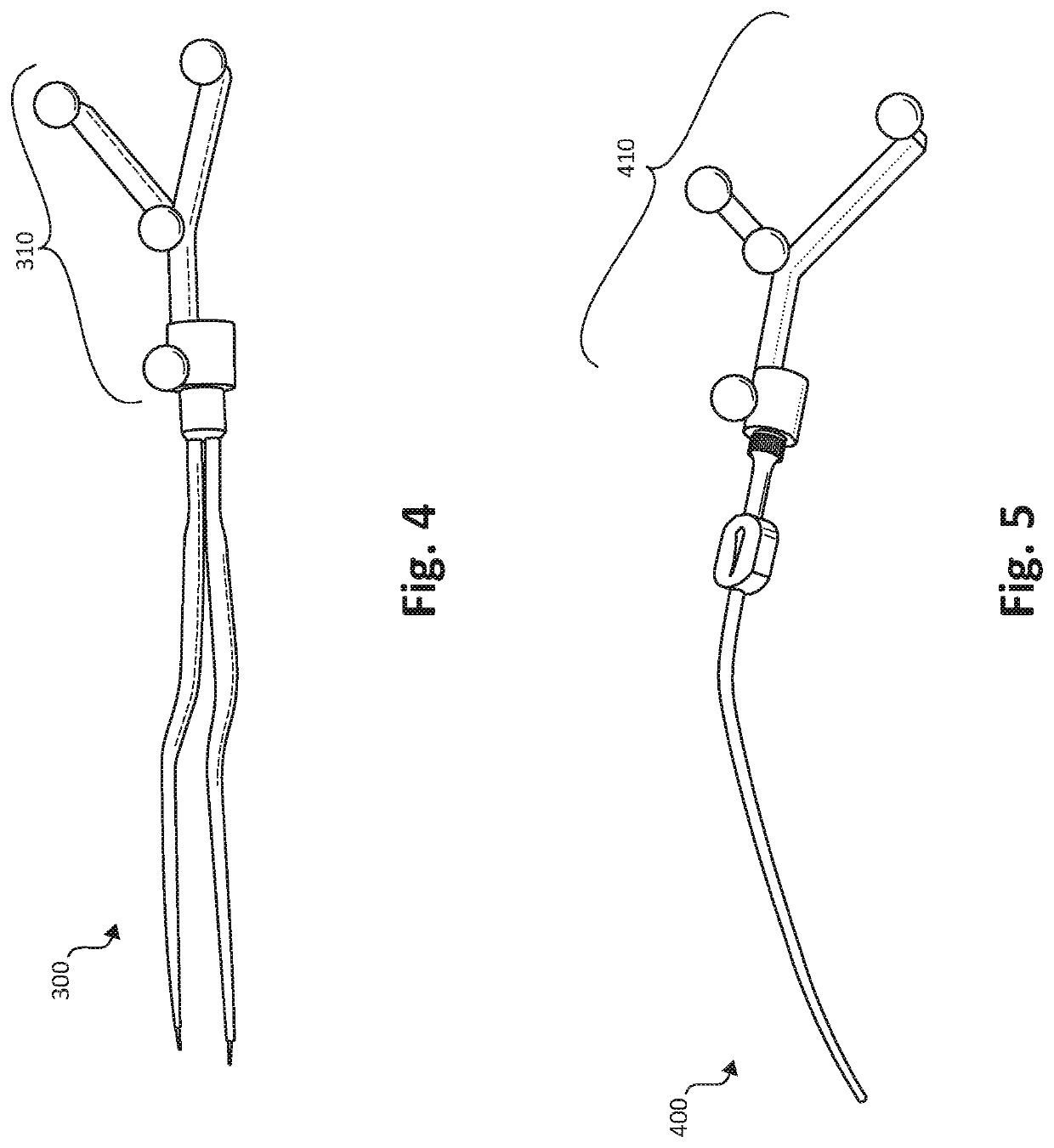3D tracking-assisted functional brain region mapping
a functional brain and tracking technology, applied in the field of functional brain mapping systems and methods, can solve the problems of reducing the confidence in medical imaging accuracy and functional region location during surgery, unable to know for certain beforehand exactly what regions, and brain to sag
- Summary
- Abstract
- Description
- Claims
- Application Information
AI Technical Summary
Benefits of technology
Problems solved by technology
Method used
Image
Examples
Embodiment Construction
[0025]This document describes systems and methods for functional brain mapping using neuronavigational equipment and additional features. For example, some implementations described herein combine novel cortical stimulator tools with stereotactic navigation for three-dimensional (3D) position tracking of the cortical stimulator tools.
[0026]In some implementations, the systems and methods described herein can be used on an awake patient. This way, the systems and methods provided herein can be used to localize the patient's brain regions including: motor, sensory (which relies on the patient reporting a sensation, and would not be available from motor evoked potentials (MEPs)), and language (which requires the patient to be speaking during stimulation). Accordingly, the systems and methods described herein need not rely solely on MEPs, but rather can utilize interactions with the patient during stimulation. The capability to localize sensory and language regions of the patient's brai...
PUM
 Login to View More
Login to View More Abstract
Description
Claims
Application Information
 Login to View More
Login to View More - R&D
- Intellectual Property
- Life Sciences
- Materials
- Tech Scout
- Unparalleled Data Quality
- Higher Quality Content
- 60% Fewer Hallucinations
Browse by: Latest US Patents, China's latest patents, Technical Efficacy Thesaurus, Application Domain, Technology Topic, Popular Technical Reports.
© 2025 PatSnap. All rights reserved.Legal|Privacy policy|Modern Slavery Act Transparency Statement|Sitemap|About US| Contact US: help@patsnap.com



